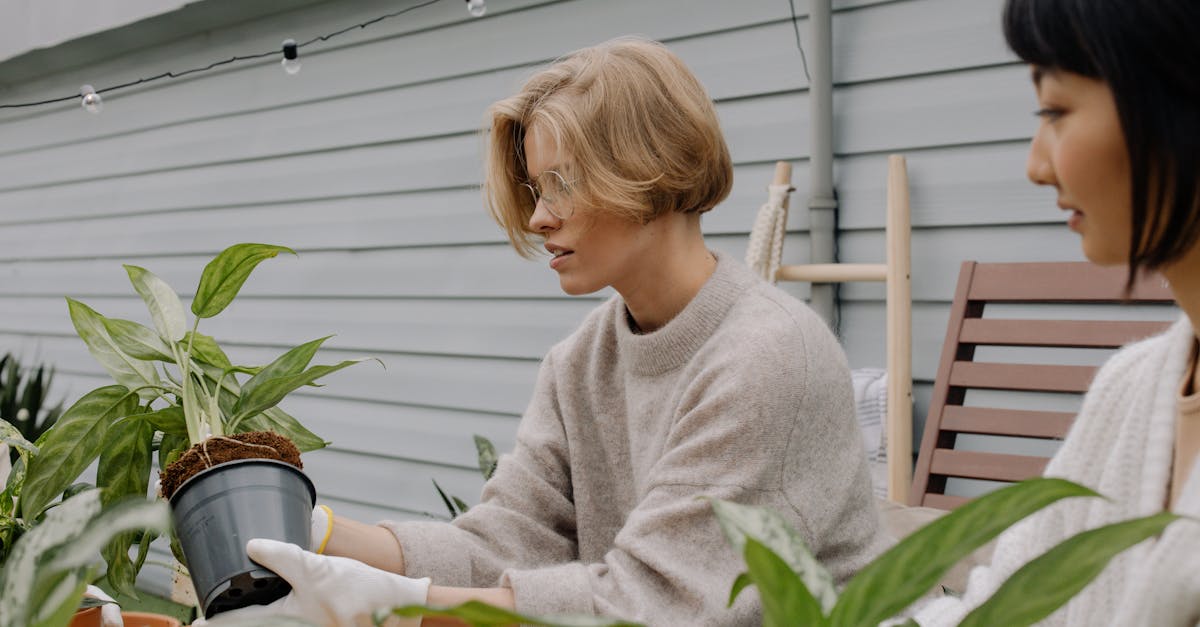Are you ready to take your indoor garden to the next level? Today, we’re diving into the important art of repotting houseplants.
From choosing the right container to mastering the art of transplanting, we’ve got you covered with expert tips and tricks.
Let’s ensure our leafy friends thrive and flourish in their new homes.
Ready to roll up our sleeves and get our hands dirty? Let’s dig in and figure out the secrets to successful repotting.
Key Takeaways
- Choose a container that is 1-2 inches larger in diameter than the current one for repotting houseplants.
- Opt for containers with drainage holes to prevent overwatering.
- Select a soil mix that promotes good drainage to prevent root rot, containing components like perlite or vermiculite.
- Repot houseplants every 1-2 years or when signs like roots protruding from drainage holes or slow growth appear.
- Follow a step-by-step repotting process: Choose the right pot, prepare the plant, inspect the roots, add soil, position the plant, and water thoroughly.
- Ensure aftercare by monitoring moisture levels, providing adequate lighting, pruning when necessary, and dusting off leaves for healthy growth.

Choosing the Right Container
When selecting a container for repotting houseplants, it’s important to choose one that provides enough room for the plant’s roots to grow comfortably.
Here are a few key tips for choosing the right container for your houseplants:
- Opt for a container that is 1-2 inches larger in diameter than the current one.
- Ensure the container has drainage holes to prevent overwatering.
- Consider the material of the container based on the plant’s watering needs.
- Plastic containers are lightweight and retain moisture well.
- Terracotta containers are porous and allow for better airflow to the roots.
For more in-depth information on selecting the perfect container for your houseplants, check out this guide on container gardening.
Selecting the Appropriate Soil Mix
When repotting houseplants, choosing the right soil mix is critical for their health. We recommend using a high-quality mix that provides good drainage to prevent root rot. A well-draining mix ensures that excess water doesn’t linger around the roots, causing harm.
Look for a soil mix that includes components like perlite or vermiculite to enhance drainage. These materials help create air pockets in the soil, promoting better root growth. Additionally, organic matter like compost can provide important nutrients for the plants to thrive.
For more in-depth information on selecting the perfect soil mix for your houseplants, check out this full guide on soil mix composition.

Knowing When to Repot
When to repot your houseplants? A good rule of thumb is every 1-2 years. How do you know it’s time? Look for these signs:
- Roots protruding from drainage holes.
- Visible roots at the soil surface.
- Slow growth or yellowing leaves.
If you notice these signals, it’s time to consider repotting. After all, each plant has its own timeline, so keep an eye out for these cues regularly.
And after all, if you’re not sure, check with a gardening expert or find a reliable source online for specific plant repotting guidelines. We recommend visiting the Better Homes & Gardens site for more detailed information on this topic.
Repotting Process Step-by-Step
When it’s time to repot your houseplants, follow these simple steps:
- Choose the Right Pot: Pick a container that’s 1-2 inches larger in diameter than the current one.
- Prepare the Plant: Gently remove the plant from its current pot, loosening the roots if they’re tightly packed.
- Inspect the Roots: Check for any rot or damage, trimming if necessary.
- Add Soil: Place a layer of potting mix at the bottom of the new pot.
- Position the Plant: Set the plant in the center of the pot and add more soil around it.
- Water Thoroughly: Give it a good soak to help the roots settle.
For more detailed instructions, visit Better Homes & Gardens. And for plant-specific tips, consult gardening experts or reliable online sources.

Aftercare and Maintenance Tips
When it comes to aftercare for your repotted houseplants, consistency is key. Here are a few important tips to keep your plants thriving:
- Monitor Moisture Levels: Check the soil regularly; ensure it’s damp but not waterlogged.
- Provide Adequate Lighting: Place your plants in areas with indirect sunlight to promote healthy growth.
- Prune When Needed: Trim any dead leaves or overcrowded growth to maintain plant health.
- Dust Off Leaves: Gently wipe the leaves with a damp cloth to allow better absorption of sunlight.
